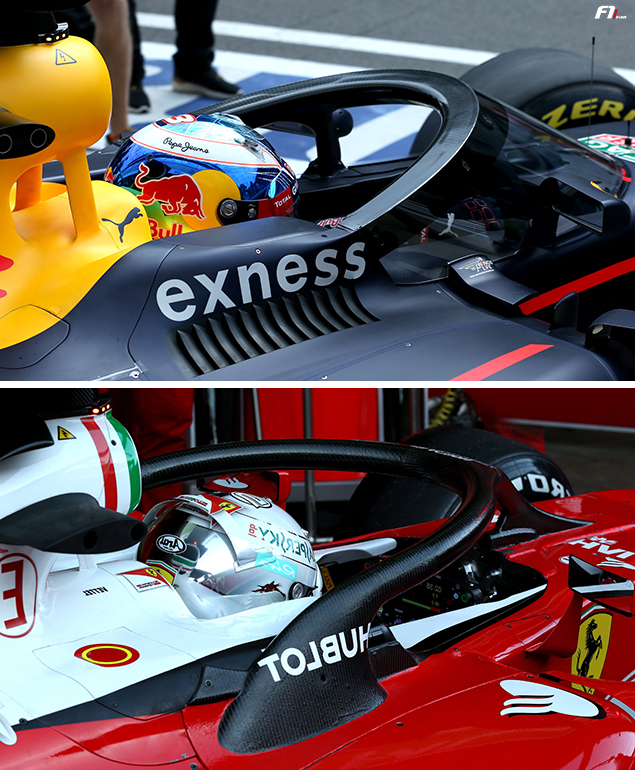
©XPB Images & Wri2
HALO: MORE FAITHFUL TO THE SPIRIT OF F1?
The version of the Halo concept that Ferrari sampled in pre-season testing is mounted at a higher level than the Aeroscreen, which probably offers a better protection from bigger objects, like a wheel or piece of bodywork, falling onto the cockpit. The Red Bull solution sits lower and merges with the cockpit’s side protection located around the helmet. In one of the videos released by Red Bull after debuting the device in Sochi, one can actually see a wheel grazing the top of the driver’s helmet after it was fired at the windscreen at high speed. This said, we don’t know the exact conditions of these static tests and F1 race director Charlie Whiting recently said the FIA was not concerned about what he described as “a minor incident”.
Although it does not fit in as smoothly as the Aeroscreen on the car, the Halo is more faithful to F1’s DNA for it keeps the cockpit open, one of the trademark features in the sport. What’s more, the device does not hide the driver’s helmet, unlike the Red Bull windscreen, which will make it harder to spot the pilot due to the reflection.
However, the central pillar of the Halo layout is likely to be more of a hindrance for the driver on a main straight, though both Sebastian Vettel and Kimi Raikkonen said visibility was fine when trialling the system. By comparison, the Aeroscreen’s lateral props blend into the supports of rearview mirrors.
At any rate, one must bear in mind that declarations from Ferrari and Red Bull drivers must be taken with a pinch of salt, given the fact that both teams are vying to promote their solution. Incidentally, it was Mercedes that initially devised the Halo concept – maybe the reigning Constructors’ champions will come up with a design of their own later on – before Ferrari debuted it.
As different as the Halo and Aeroscreen are, both make it harder for the driver to exit the car. What would happen if it is flipped upside down like Fernando Alonso’s MP4-31 after his crash in Australia, or ploughed in a tyre wall or TechPro barriers? In order to avoid the driver getting stuck, a sturdy opening mechanism would be desirable.
LMP1 chassis and their fully closed cockpits are logically fitted with doors. Endurance drivers must be able to leave their vehicle in seven seconds from the driver’s seat, in nine seconds from the passenger’s seat. Grand Prix drivers must be able to perform the same task in five seconds. Whiting has already said the FIA would be willing to increase the minimum time required to leave the car as a compromise for better head protection.
The governing body has until July 1 to select the cockpit protection system that will be introduced on 2017 cars. With next year’s machines set to lap up to five seconds faster than at present, the chosen safety device will definitely not be superfluous. With all due respect to F1 traditionalists.
F1i Classic: Schumacher's "5th gear only" signature drive at the 1994 Spanish GP






